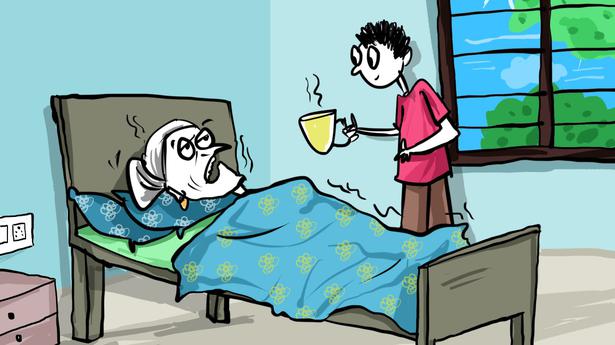
Shivering in the heat
The Hindu
Why was Grandma shivering right in the middle of a sizzling hot day?
May boils you; it sizzles and sweats you out. Dripping sweat and wanting to throw off my clothes and jump into a cool pool, I wandered about the house and found Grandma shivering.
“Grandma! Really! You’re shivering in this heat?!”
“But this water’s cold!” she gasped, and continued to shiver.
“What water?” I asked.
Since Mom and Dad weren’t home, I had to tackle this myself. Was she developing some awful viral fever? Or was this May madness? As I became more and more desperate trying to figure out this mystery, she suddenly rolled her eyes at me. “Grandpa! What did they do to the water?”
This was too much! Grandma thought I was her grandpa! I didn’t know whether to laugh or cry. I made her a cup of hot tea, covered her with a blanket, hugged her close and made comforting sounds. “You’re so kind, Grandpa,” she said in a small, grateful voice. I smiled back in a grandfatherly sort of way.
Soon she began to speak. Half-mumbling, as if she was talking in her sleep. I listened patiently, then carefully, and finally with sudden, sharp interest.













